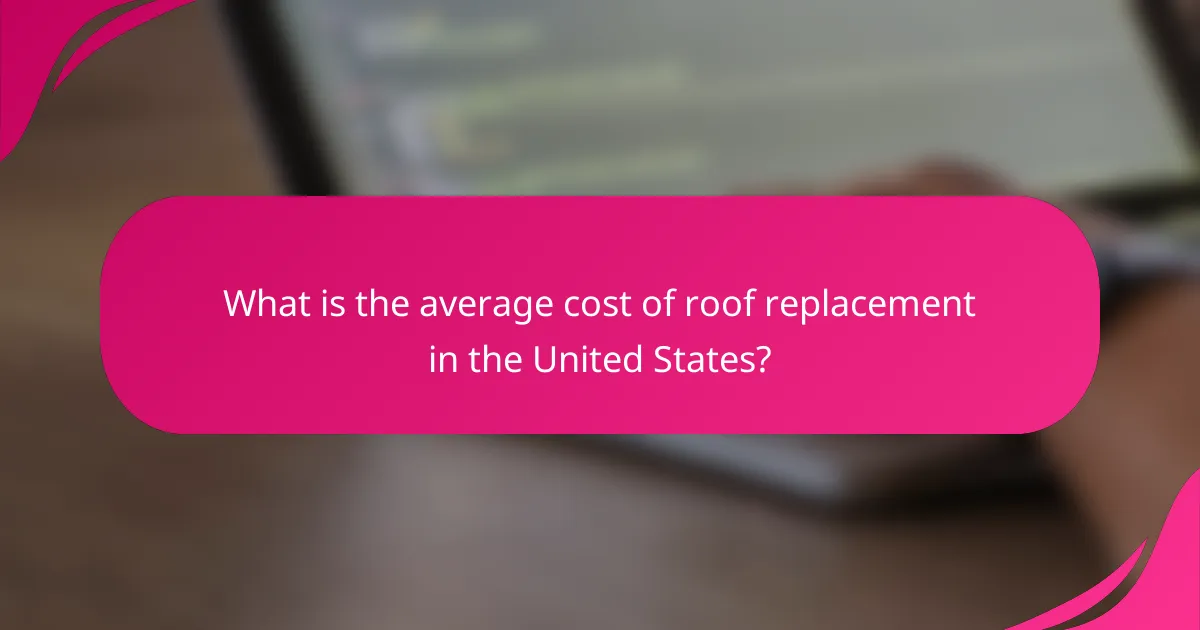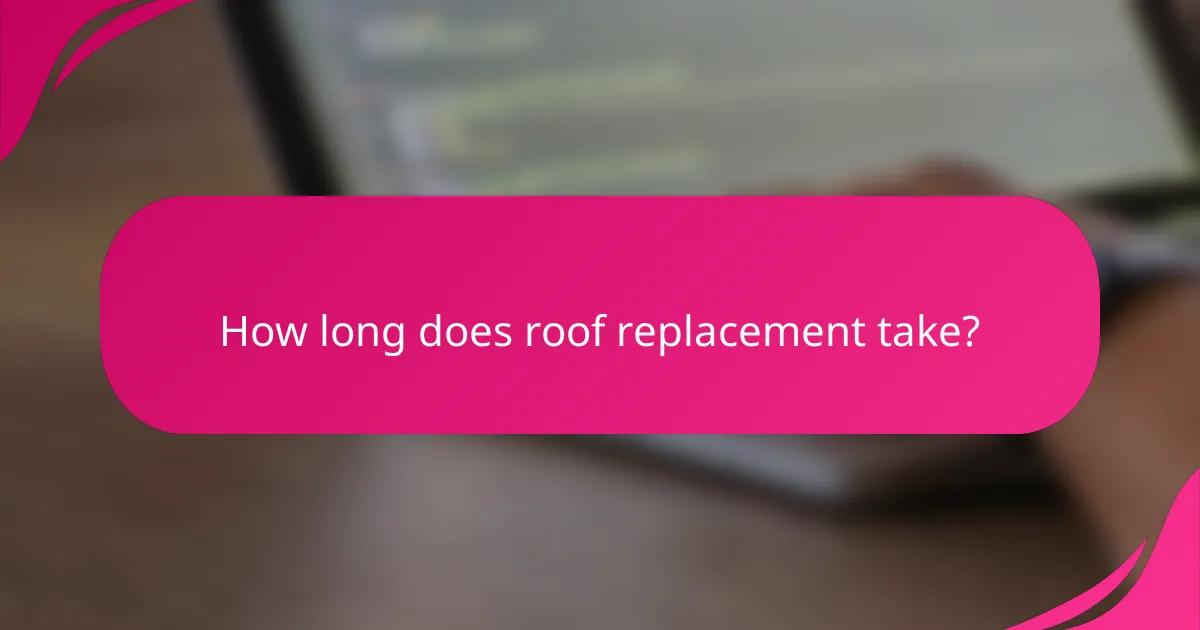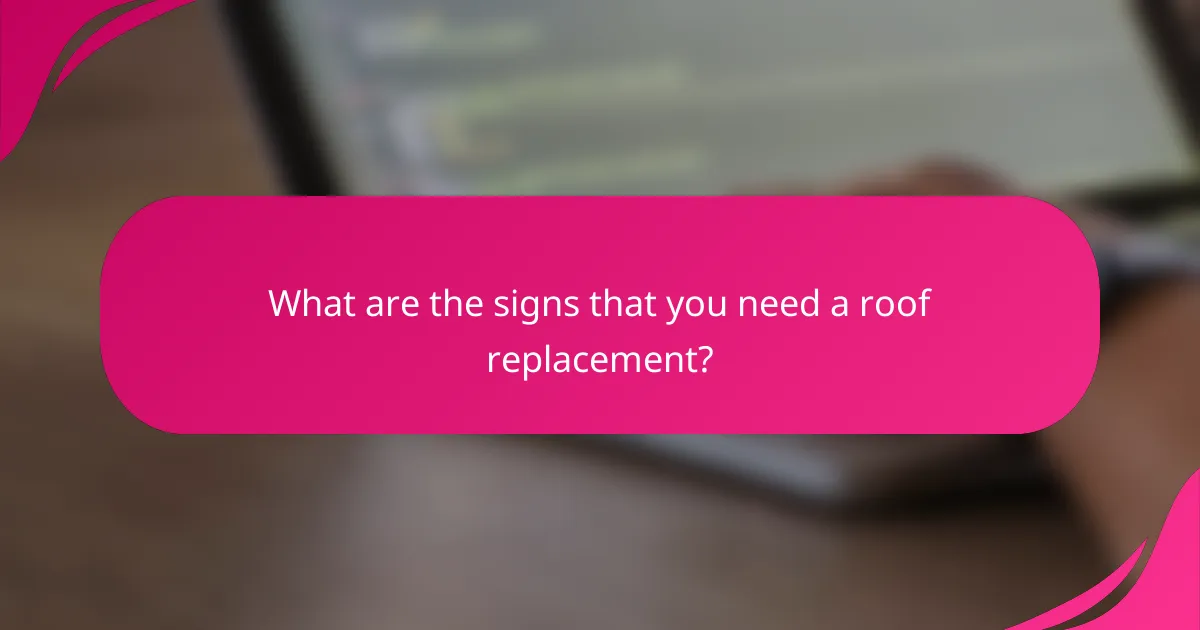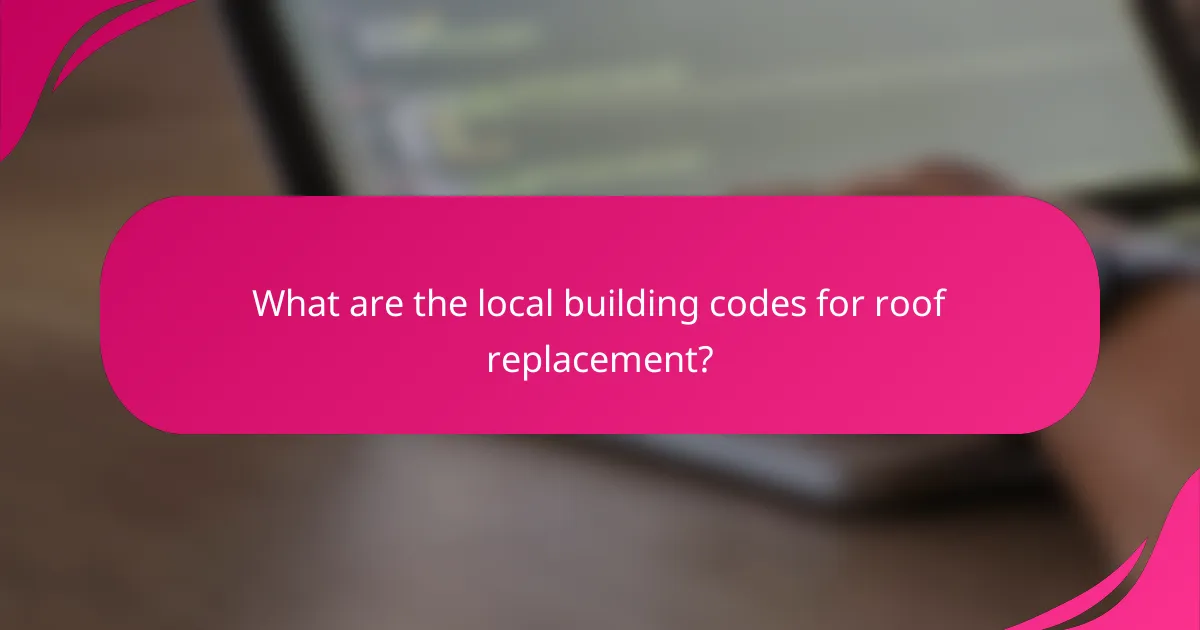Replacing a roof is a significant investment, with average costs in the United States ranging from $5,000 to $15,000 based on materials, labor, and roof size. Homeowners have several material options to choose from, including asphalt shingles, metal, tile, and wood shakes, each offering distinct advantages. The installation timeline can vary from a few days to a couple of weeks, influenced by project complexity and weather conditions.

What is the average cost of roof replacement in the United States?
The average cost of roof replacement in the United States typically ranges from $5,000 to $15,000, depending on various factors such as materials, labor, and the size of the roof. Homeowners should consider these elements when budgeting for a new roof to ensure they make an informed decision.
National average cost range
The national average cost for roof replacement usually falls between $5,000 and $15,000. This range can vary significantly based on the type of roofing material selected, the complexity of the installation, and the size of the home. For example, asphalt shingles are generally more affordable, while metal or tile roofs can be more expensive.
Labor costs also play a crucial role in the overall expense, with professional installation often accounting for a substantial portion of the total price. Homeowners should obtain multiple quotes to find competitive pricing in their area.
Factors affecting cost
Additionally, the pitch of the roof and any necessary structural repairs can increase labor costs. Homeowners should also consider potential permits or inspections required by local regulations, which can add to the overall expense.
Regional cost variations
The cost of roof replacement can vary significantly across different regions of the United States. For instance, areas with a high cost of living, such as California or New York, may see higher labor and material costs compared to more rural regions.
Weather conditions also impact pricing; regions prone to severe weather may require more durable roofing materials, which can increase costs. Homeowners should research local market conditions and consult with local contractors to get a better understanding of regional pricing trends.

What are the best roofing materials for replacement?
The best roofing materials for replacement depend on factors like durability, cost, and aesthetic appeal. Common options include asphalt shingles, metal roofing, tile roofing, and wood shakes, each offering unique benefits and considerations.
Asphalt shingles
Asphalt shingles are one of the most popular roofing materials due to their affordability and ease of installation. They typically cost between $90 and $100 per square (100 square feet) and come in a variety of colors and styles.
These shingles have a lifespan of around 15 to 30 years, depending on the quality and maintenance. They are suitable for most climates but may not perform as well in extreme weather conditions.
Metal roofing
Metal roofing is known for its durability and longevity, often lasting 40 to 70 years. The cost ranges from $300 to $700 per square, depending on the type of metal used, such as steel, aluminum, or copper.
This material is energy-efficient and can reflect heat, potentially lowering cooling costs. However, installation can be more complex, requiring skilled labor to ensure proper sealing and insulation.
Tile roofing
Tile roofing, often made from clay or concrete, is highly durable and can last over 50 years. The cost typically ranges from $600 to $1,200 per square, making it one of the more expensive options.
Tile roofs are particularly effective in hot climates, as they provide excellent insulation. However, they are heavy and may require additional structural support, which can increase installation costs.
Wood shakes
Wood shakes offer a natural aesthetic and can last around 30 years with proper maintenance. The cost generally falls between $300 and $600 per square, depending on the type of wood used.
While they provide good insulation, wood shakes require regular maintenance to prevent rot and insect damage. They may also be subject to local fire regulations, so it’s essential to check local codes before installation.

How long does roof replacement take?
Roof replacement typically takes anywhere from a few days to a couple of weeks, depending on various factors. The complexity of the project, weather conditions, and the type of materials used can all influence the overall timeline.
Typical installation timeline
On average, a straightforward roof replacement can be completed in 1 to 3 days. For larger homes or more complex roofing systems, the process may extend to a week or more. This includes time for removing the old roof, making any necessary repairs, and installing the new materials.
For example, a simple asphalt shingle roof might be done in 1 to 2 days, while a metal roof could take 3 to 5 days due to the additional installation steps involved.
Factors influencing duration
Several factors can affect how long a roof replacement takes. Weather conditions play a significant role; rain or high winds can delay work. Additionally, the size of the roof and the complexity of the installation, such as the number of layers or the type of materials, can extend the timeline.
Labor availability is another crucial factor. If skilled workers are in high demand, it may take longer to schedule the project. Homeowners should also consider permitting requirements, which can add extra time to the overall process, especially in areas with strict building codes.

What are the signs that you need a roof replacement?
Signs that indicate a roof replacement is necessary include visible damage, the age of the roof, and performance issues. Recognizing these indicators early can help prevent more extensive damage and costly repairs.
Visible damage indicators
Visible damage on your roof can manifest as missing shingles, cracks, or curling edges. These issues often lead to leaks and further deterioration if not addressed promptly.
Additionally, check for signs of sagging or uneven surfaces, which may indicate structural problems. Regular inspections can help catch these visible indicators before they escalate into major repairs.
Age of the roof
The age of your roof is a critical factor in determining whether it needs replacement. Most roofing materials have a lifespan ranging from 15 to 50 years, depending on the type used.
If your roof is approaching or has exceeded its expected lifespan, consider a replacement. Even if it appears intact, aging materials can become less effective at protecting your home.
Performance issues
Performance issues such as leaks, water stains on ceilings, or increased energy bills can signal that your roof is no longer functioning properly. These problems often arise from wear and tear over time.
To address performance issues, conduct regular maintenance checks and be proactive about repairs. If problems persist despite repairs, a full roof replacement may be the most cost-effective solution in the long run.

How to choose a roofing contractor?
Selecting a roofing contractor involves evaluating their experience, qualifications, and reputation. It’s essential to choose someone who is licensed, insured, and has a solid track record in your area.
Key qualifications to look for
When choosing a roofing contractor, prioritize those with proper licensing and insurance. A valid license ensures they meet local regulations, while insurance protects you from liability in case of accidents during the project.
Experience is another critical factor. Look for contractors who have been in business for several years and have completed numerous roofing projects similar to yours. This experience often translates to better workmanship and reliability.
Questions to ask potential contractors
Start by asking about their experience with your specific roofing material and style. Inquire about their process for obtaining necessary permits and how they handle unexpected issues during installation.
Additionally, request references from previous clients and check online reviews. It’s beneficial to ask about their warranty policies, both for materials and labor, to ensure you have coverage in case of future problems.

What financing options are available for roof replacement?
Several financing options can help homeowners manage the costs of roof replacement, including home equity loans, personal loans, and insurance claims. Each option has its own benefits and considerations, making it important to evaluate which best fits your financial situation.
Home equity loans
Home equity loans allow homeowners to borrow against the equity they have built in their property. Typically, these loans offer lower interest rates compared to unsecured loans, as the home serves as collateral. Borrowers can usually access funds ranging from tens of thousands to over a hundred thousand dollars, depending on their equity.
When considering a home equity loan, evaluate your current mortgage terms and the total equity available. Keep in mind that failing to repay can result in losing your home, so ensure that your budget can accommodate the monthly payments.
Personal loans
Personal loans are unsecured loans that can be used for various purposes, including roof replacement. They generally have higher interest rates than home equity loans but can be easier to obtain, especially for those without significant home equity. Loan amounts typically range from a few thousand to tens of thousands of dollars.
Before applying for a personal loan, check your credit score, as this will impact your interest rate and eligibility. Compare offers from different lenders to find the best terms and avoid loans with high fees or prepayment penalties.
Insurance claims
If your roof has been damaged due to a covered event, such as a storm or fire, you may be able to file an insurance claim to cover the replacement costs. Homeowners should review their insurance policy to understand coverage limits and deductibles, as these factors will affect the amount reimbursed.
To file a claim, document the damage with photos and gather any necessary repair estimates. Contact your insurance provider promptly to initiate the claims process, and be prepared to negotiate if the initial offer does not meet your expectations.

What are the local building codes for roof replacement?
Local building codes for roof replacement dictate the standards and regulations that must be followed during the roofing process. These codes ensure safety, durability, and compliance with local laws, which can vary significantly by region.
Average costs of roof replacement
The average cost of roof replacement can vary widely based on factors such as material choice, roof size, and labor expenses. In the United States, homeowners typically spend between $5,000 and $15,000, with premium materials like slate or metal pushing costs higher.
When budgeting for a roof replacement, consider additional expenses such as permits, inspections, and potential repairs to underlying structures. It’s wise to obtain multiple quotes from local contractors to ensure competitive pricing.
Material options for roofing
Common roofing materials include asphalt shingles, metal, tile, and wood. Asphalt shingles are the most popular due to their affordability and ease of installation, while metal roofs offer durability and energy efficiency.
When selecting materials, consider factors such as climate, aesthetic preferences, and long-term maintenance costs. For example, tile roofs are ideal for hot climates but can be heavy and costly, while wood may require more upkeep in humid areas.
Installation timeline for roof replacement
The installation timeline for roof replacement typically ranges from a few days to a couple of weeks, depending on the project’s complexity and weather conditions. Simple asphalt shingle replacements can often be completed in just a few days.
To ensure a smooth process, plan for potential delays due to inclement weather or material availability. Communicate clearly with your contractor about the expected timeline and any necessary preparations on your part.
